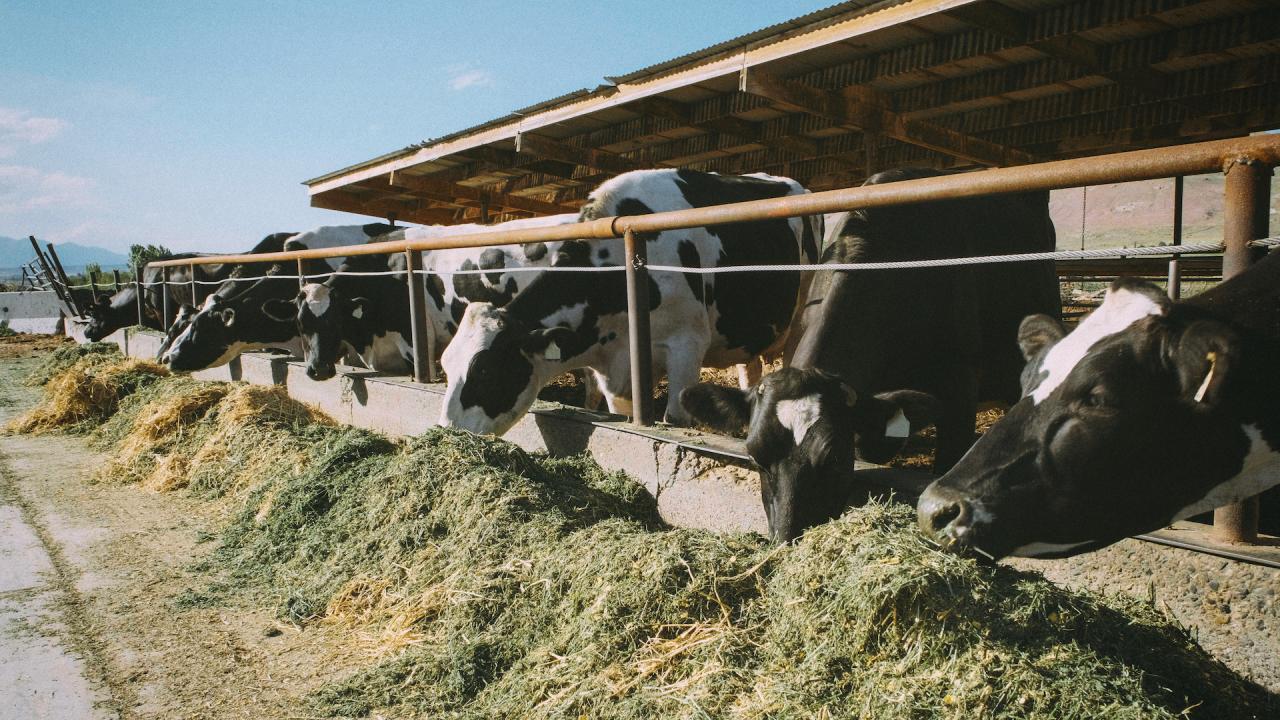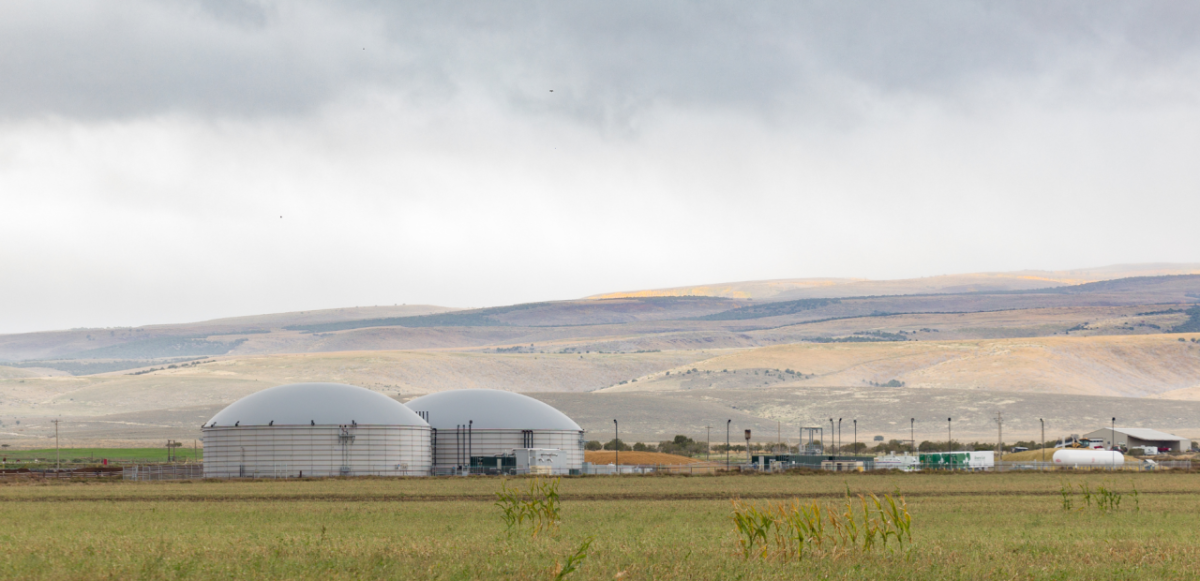Boost your dairy farm‘s efficiency with milk infrared spectroscopy. Discover how this technology enhances nitrogen utilization and minimizes environmental impact. Curious? Keep reading.
Summary: Are you struggling with nitrogen management on your dairy farm? You’re not alone. Excess nitrogen impacts the environment and your bottom line. Understanding how efficiently your cows use nitrogen can be a game-changer. This article explores using milk mid-infrared (MIR) spectroscopy to estimate cow-level nitrogen efficiency metrics. Insights from the research highlight MIR’s potential to predict nitrogen use traits, offer tailored feeding strategies, and inform breeding programs. MIR spectroscopy can enhance nitrogen management, reduce environmental impact, and improve financial outcomes. The remarkable potential of MIR technology is supported by findings, with cross-validation R2 values of 0.61, 0.74, and 0.58 for nitrogen intake, nitrogen use efficiency (NUE), and nitrogen balance (Nbal)—underscoring its practical benefits for sustainable dairy production.
- Improved Nitrogen Management: MIR spectroscopy can help dairy farmers manage nitrogen more effectively.
- Sustainability and Efficiency: MIR technology offers a sustainable approach to boost efficiency and reduce environmental impact.
- Research-Backed Accuracy: Findings show vital predictive accuracy for nitrogen intake, NUE, and Nbal with R2 values of 0.61, 0.74, and 0.58, respectively.
- Tailored Feeding Strategies: Utilizing MIR data can help develop feeding strategies tailored to the needs of individual cows.
- Enhanced Breeding Programs: MIR-derived nitrogen efficiency metrics can inform breeding decisions, aiding in selecting more efficient cows.
- Financial Benefits: Better nitrogen management can improve financial outcomes by reducing waste and improving farm productivity.

In today’s world, sustainable dairy production is more than a slogan; it is a need. Public interest in food production fuels worldwide need for better sustainability indicators in dairy production systems. Excess nitrogen excretion from dairy cows pollutes water. It increases greenhouse gas emissions, resulting in substantial financial losses for dairy producers. Less than 25% of the nitrogen consumed by grazing dairy cows is utilized for biological purposes, with the remainder excreted. Even with limited feeding systems, efficiency levels seldom approach 30%. Modern methods such as milk mid-infrared spectroscopy improve nitrogen management, reduce environmental effects, and lower operating expenses.
The Fundamental Role of Nitrogen Utilization in Dairy Farming
To comprehend the relevance of nitrogen use in dairy cows, one must first understand what it includes. Nitrogen utilization refers to how well cows convert the nitrogen in their food into essential biological processes and outputs, such as milk production. Optimizing this process is critical not just for increasing farm profitability but also for addressing environmental issues. Inefficient nitrogen usage causes excessive nitrogen excretion, which may contribute to water contamination and increase greenhouse gas emissions.
Typically, dairy cows consume a large quantity of nitrogen via their diet. However, they use less than 30% of it for development, milk, and other biological processes. In comparison, the remaining 70% or more is expelled into the environment. This excretion happens predominantly via urine and feces, and its high nitrogen concentration may have negative environmental consequences, such as nutrient runoff and increased greenhouse gas emissions.
Measuring nitrogen intake reliably is a considerable difficulty, particularly in grazing systems. In contrast to enclosed feeding operations, where diets can be accurately managed and monitored, grazing systems include cows consuming grasses and additional feed—accurately measuring the amount of nitrogen cows consume. At the same time, grazing is complicated due to variations in fodder type and monitoring individual consumption. Because of this intricacy, different approaches, such as mid-infrared milk spectroscopy, are used to measure nitrogen efficiency indirectly.
Ever Wondered How to Estimate Your Cows’ Nitrogen Usage Efficiently?
Have you ever wondered how to evaluate your cows’ nitrogen consumption more accurately without using expensive and labor-intensive methods? Enter milk mid-infrared (MIR) spectroscopy is a cutting-edge technology gaining popularity in the dairy sector for calculating nitrogen efficiency parameters.
Simply speaking, MIR spectroscopy entails transmitting infrared light through milk samples. Milk absorbs light at different wavelengths, and the resultant spectra provide information about its composition. Consider it a fingerprint for each milk sample, revealing specific chemical composition information, including nitrogen-related properties.
Why should you consider using MIR spectroscopy for regular monitoring on your farm? First, it is easy and fast to supply data, allowing prompt decision-making. Instead of analyzing daily feed intake and nitrogen production, a fast milk test may provide an accurate picture of nitrogen intake, nitrogen usage efficiency (NUE), and nitrogen balance. This translates to more efficient breeding, personalized feeding tactics, and a more sustainable enterprise. Imagine knowing exactly which cows are the greatest at nitrogen efficiency and being able to propagate this beneficial feature into future generations.
Case Study: Research Findings on Milk Infrared Spectroscopy
Researchers used 3,497 test-day data to explore the ability of milk mid-infrared (MIR) spectroscopy to predict nitrogen efficiency features in dairy cows. The critical measures investigated were nitrogen intake, nitrogen utilization efficiency (NUE), and nitrogen balance (Nbal). Data from four farms over 11 years was analyzed using neural networks (NN) and partial least squares regression (PLSR). The results showed that neural networks predicted nitrogen intake, NUE, and Nbal the most accurately, especially when morning and evening milk spectra were combined with milk production, parity, and days in milk (DIM).
Accuracy of Predictions Using Neural Networks and Partial Least Squares Regression
Neural networks surpassed partial least squares regression for most nitrogen-related variables, with cross-validation R2 values of 0.61, 0.74, and 0.58 for nitrogen intake, NUE, and Nbal. In contrast, PLSR produced lower prediction accuracies, particularly when validation was stratified by herd or year. While NN performed well in cross-validation circumstances, it had lower accuracy in form validation. This emphasizes the relevance of variability and data representation in calibration and validation datasets.
Practical Implications for Dairy Farmers
The results indicate that MIR spectroscopy, especially when paired with NN, is a potential approach for forecasting nitrogen efficiency measures on a wide scale. This entails frequently monitoring and controlling nitrogen consumption for dairy producers to improve economic efficiency and environmental sustainability. Farmers may utilize these findings to adapt feeding practices and make educated breeding choices, resulting in increased nitrogen usage efficiency, reduced nitrogen excretion, and related negative environmental implications.
Taking the First Steps Toward Implementing MIR on Your Dairy Farm
Implementing milk infrared spectroscopy (MIR) on your dairy farm may seem complicated. Still, it is doable with a few innovative steps. Begin by cooperating with a lab that provides MIR analysis services. These facilities employ modern spectrometers to examine milk samples and provide thorough data on nitrogen use and other variables. Many milk recording organizations work with such laboratories, making the connection relatively straightforward.
The potential cost reductions are significant. By adequately calculating each cow’s nitrogen intake and efficiency, you may alter feed regimens to maximize nutrient absorption. This tailored feeding eliminates the waste of costly feed additives, saving thousands of dollars annually.
Furthermore, increasing nitrogen use efficiency will contribute to a healthier ecosystem. Reduced nitrogen excretion reduces runoff into nearby rivers, reducing the likelihood of eutrophication and toxic algal blooms. This benefits local ecosystems, improves community relations, and assures adherence to environmental standards.
For smooth integration into existing farm management practices, consider the following tips:
- Start Small: Begin with a trial project, employing MIR on a sample of your herd to collect early data and alter management tactics as needed.
- Train Your Team: Ensure your employees understand how to collect and handle milk samples appropriately. Consider the training sessions offered by your MIR lab partner.
- Analyze and Adapt: MIR analysis findings should regularly be compared with production results. Use this information to make sound judgments regarding feeding and other management methods.
- Continuous Monitoring: Include MIR in your usual milk recording. This will allow you to monitor your progress and make appropriate modifications.
Following these procedures improves your farm’s efficiency and profitability and positively impacts the environment. MIR technology can significantly improve your farm’s sustainability and operating efficiency.
The Bottom Line
Improving nitrogen usage in dairy production is more than just a technical requirement; it represents a commitment to environmental stewardship and economic efficiency. Monitoring and optimizing nitrogen usage may significantly decrease pollution and improve the sustainability of your farming operations.
Using milk infrared spectroscopy (MIR) is a promising technique. MIR provides excellent information about individual cow nitrogen efficiency, leading to improved farm management and a favorable environmental effect.
So, while you evaluate these insights and ideas, think about how you might help the dairy business become more sustainable. Your decisions now will affect the future of farming for centuries.












